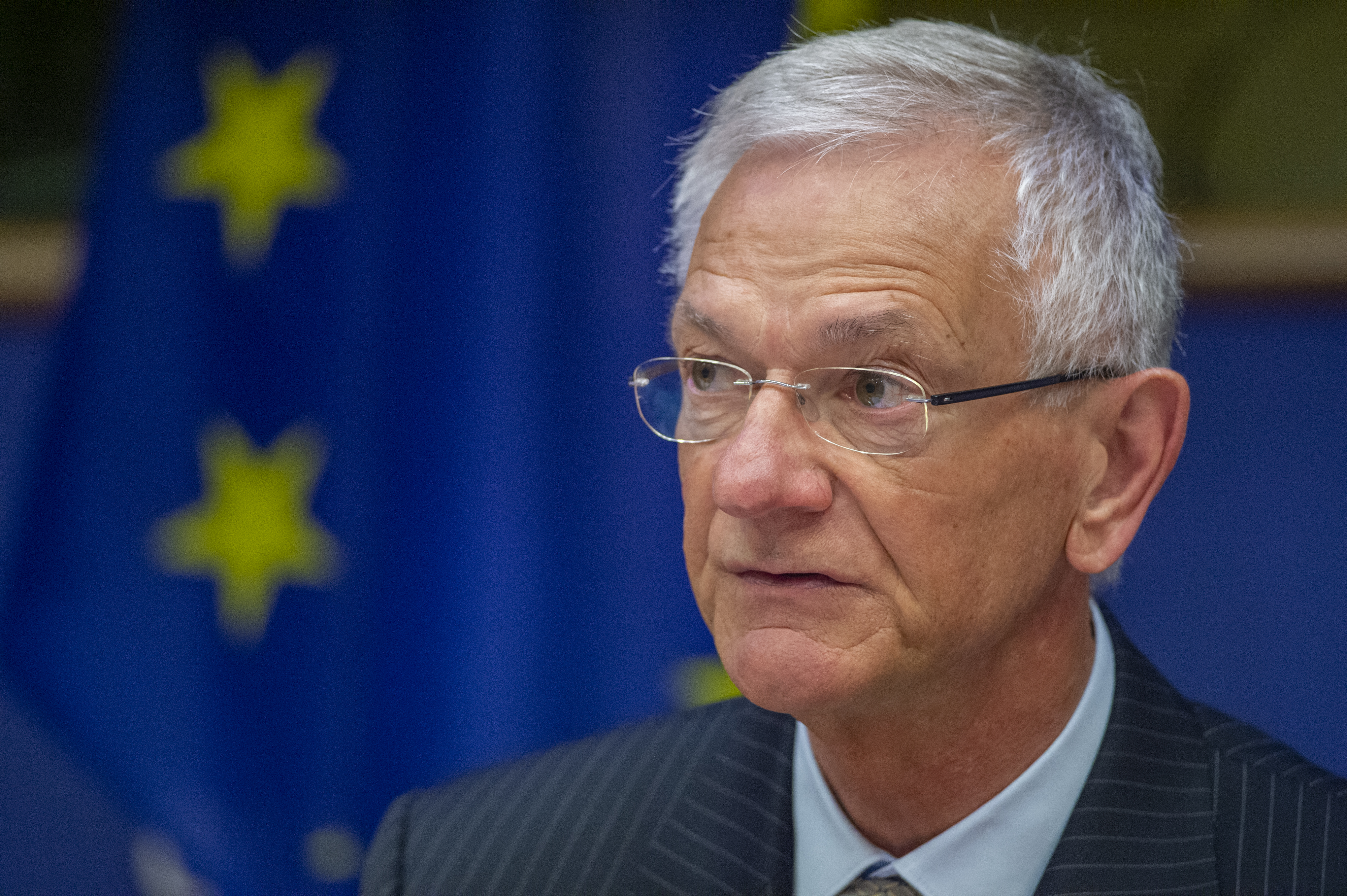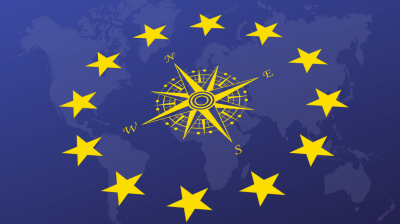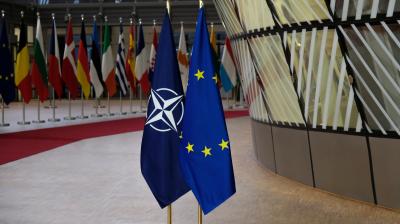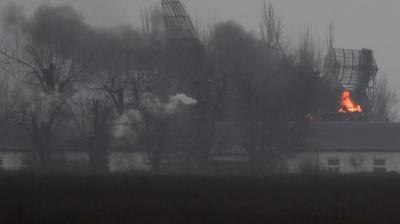Public Hearing European Parliament: EU-NATO cooperation
On 25 April, a Public Hearing on EU-NATO cooperation took place in the framework of a SEDE ordinary meeting. The Hearing focused on the follow-up of the Madrid Summit, where Members have set new strategic directions for the Alliance and reinforced NATO's deterrent posture on the eastern flank and sent a strong message to Russia about its unity in the face of aggression against Ukraine.
The debate will also focus on the 3rd Joint Declaration and its stated goal to take the EU-NATO partnership to the next level. Members will exchange views on concrete actions that need to be taken to achieve this objective in order to create more synergies between the EU Strategic Compass and NATO Strategic Concept.
Amongst the speakers was Dick Zandee, Senior Research Fellow and Head of the Security Unit. Read his statement below.

Statement
Let me start by thanking the Subcommittee on Security and Defence of the European Parliament for inviting me to participate in this Public Hearing.
As the text of the agenda shows, the Subcommittee has organised the Hearing “In association with the Delegation for Relations with the NATO Parliamentary Assembly”. I would argue that such a format already indicates how the EU-NATO relationship has changed over two decades.
I would like to start by looking back. What are the origins of the EU-NATO relationship? What has happened since the Berlin Plus arrangements came into force in March 2003? Then, I will talk about the current situation, after which I will conclude with a few recommendations on the way forward.
The origins
At the time of the negotiations of the Berlin Plus package I was working as the first Defence Counsellor at the Dutch Permanent Representation to the EU and participating in the meetings of the Political-Military Group (PMG) from 2000 until 2005. The PMG prepares decisions to be taken in the EU on Common Security and Defence Policy (CSDP) issues (at the time called European Security and Defence Policy-ESDP).
At the turn of the century, the major security issue was not Russia or China. The break-up of Yugoslavia was the trigger for launching the EU’s security and defence agenda. Increasing instability in the southern neighbourhood also raised the question of how the EU could deal with crises, including by deploying military forces itself if required.
Crisis management operations – also the focus of NATO’s agenda at the time – was the driver of how the EU-NATO relationship should be constructed. EU member states fearing a duplication with NATO argued for making use of the assets and capabilities of the Alliance. Others underlined the importance of autonomous EU operations. Both schools won the day.
For using the NATO operational planning and conduct capabilities, both organisations approved the so-called Berlin Plus arrangements after lengthy and often difficult negotiations.
At the end of March 2003, Berlin Plus was immediately applied to the military operation EUFOR Concordia in the former Yugoslav Republic of Macedonia – as it was called at the time – taking over from NATO (Operation Harmony).
However, politically EU-NATO relations were seriously harmed by the so-called Chocolate Summit of Belgium, France, Germany and Luxembourg in April 2003 with a ten-point agenda of proposals for the EU. One of these proposals was to establish a military EU Headquarters in Tervuren.
Not only the United States, but many EU member states rejected the proposal as an unnecessary and undesirable duplication of SHAPE – the NATO military Headquarters in Mons.
This early crisis in EU-NATO relations caused a serious delay in the process of the EU taking over the next operation of NATO: the Stabilization Operation (SFOR) in Bosnia & Herzegovina.
It took until December 2004, at the end of the Dutch EU Presidency, before Operation Althea replaced SFOR under the Berlin Plus arrangements with a formal ceremony in Sarajevo. Today, Operation Althea is still ongoing and it is the only EU operation that makes use of the NATO planning and conduct capabilities.
In the meantime, the EU has launched a considerable number of autonomous military operations on land and at sea. The Strategic Compass of March 2022 has also turned the page in enlarging the Military Planning & Conduct Capability to what could be called – but for political reasons is not labelled as – a military EU Headquarters in Brussels.
In the meantime, EU-NATO cooperation has developed in other areas, in particular in capability development. Both organisations have moved from competition to coordination and cooperation.
Today, the Multinational Multi-Role Tanker Fleet – based at Eindhoven and Cologne Air Bases – is operational with seven Airbus-320 aircraft in a military version and another three on order.
The fleet is owned by NATO and managed by the NATO Support and Procurement Agency (NSPA), but the initiative was taken by the European Defence Agency more than 15 years ago and the proposed pooling concept was developed by a Belgian Air Force colonel working at the EDA at the time.
In its Capability Development Plan, the EU does not limit itself to the need for EU crisis management operations. Lessons learned from ongoing operations and conflicts are taken into account as well as long-term trends in innovation and technologies.
Thus, when comparing the capability priorities in the EU – as the basis for channelling investment and exploring the potential for collaborative solutions – one will find a remarkable overlap with NATO’s shortfalls as depicted in the NDPP – the NATO Defence Planning Process that steers, monitors and assesses whether the Allies are delivering the capabilities to the Alliance according to their capability targets.
In other words, twenty years after the Berlin Plus package entered into force, a lot has happened and EU-NATO cooperation has developed to a remarkable level. In 2016-2017, both organisations agreed on a common set of proposals for cooperation, reaching 74 in total. In fact, when reading the seventh progress report on the implementation of the common set of proposals of June 2022, one almost becomes lost in the amount of details concerning meetings, exchanges, and mutual participation in activities in many areas – from countering hybrid threats to defence capabilities and from political dialogue to cyber and security defence.
The current situation
Today, and no doubt in the years to come, Russia is dominating the EU-NATO cooperation agenda. The unprecedented European security crisis, caused by Russia’s armed attack on Ukraine, has resulted in high-level political synchronization of responses by the EU and NATO.
Both organisations have taken – and continue to take – measures in their own areas of responsibility in a concerted effort to respond to Russia’s aggression and to support Ukraine.
The EU, amongst other measures:
- has launched ten packages of sanctions;
- is reducing its energy dependency on Russian gas and oil in record time;
- has granted Ukraine EU candidate status;
- has initiated new funds for the common procurement of military equipment to compensate for deliveries of weapon systems to Ukraine;
- is carrying out on its own soil – in Germany and Poland – a CSDP operation to train military personnel of the Ukraine Armed Forces; and
- most recently, 22 EU member states plus Norway have together decided to procure artillery and rocket munitions for Ukraine worth € 1 billion.
NATO, amongst other measures:
- has increased its enhanced Forward Presence (eFP) in the three Baltic States and Poland as well as extending eFP to Slovakia, Hungary, Romania and Bulgaria;
- has taken other measures to increase vigilance such as the deployment of Patriot missile defence units and fighter aircraft to enhance the protection of Allied airspace;
- is now developing the content of the New Force Model;
- has welcomed Finland as a NATO Ally on 4 April (and Sweden is to follow);
- has strengthened the Comprehensive Assistance Package, providing Ukraine with all kinds of support, ranging from medical supplies to explosive ordnance disposal equipment, and counter-drone equipment;
- continues to provide assistance and advice to Ukraine in countering hybrid threats and increasing resilience.
Together, EU and NATO have stood firm and united in defending the norms and values of democracy, the rule of law, the freedom of expression and human rights. Common meetings between EU and NATO political leaders have sent the right message of a common cause.
On 10 January this year, the President of the EU Council, Charles Michel, European Commission President Ursula Von der Leyen, and NATO Secretary General Jens Stoltenberg issued the Third Joint Declaration, sending this message of unity of effort in responding to Russia’s aggression and in supporting Ukraine in its fight for restoring “its independence, sovereignty and territorial integrity within its internationally recognized borders” – as stated in paragraph 3 of the Declaration.
It is up to both organisations and their member states to uphold that unity, which will be tested primarily by Russia, using hybrid methods to destabilise Western societies, threatening Allies with military activities at their borders and by rumbling the drum of using nuclear weapons – to frighten us and to create panic in our societies.
What does it imply for the future of EU-NATO cooperation?
The way forward
The 3rd Joint Declaration states that the EU-NATO partnership will be taken “to the next level” and refers to strengthening cooperation in existing areas and expanding and deepening cooperation “to address in particular the growing geostrategic competition, resilience issues, protection of critical infrastructures, emerging and disruptive technologies, space, the security implications of climate change, as well as foreign information manipulation and interference.” (Paragraph 12).
Above all, this requires transparency and the mutual exchange of relevant information – but we cannot neglect the problem of non-overlapping membership that will continue to provide a stumbling block.
Therefore, the informal exchange of information by using the well-established and generally well-functioning staff-to-staff contacts at all levels and involving all kinds of experts remains ‘the way to go’.
Naturally, there are other issues that can also harm EU-NATO relations, from European security architecture – including the question of strategic autonomy – to defence technological and industrial interests.
But the war in Ukraine has made it clear that only one organisation can deter Russia and defend Europe if needed: NATO. EU member states, also NATO Allies, have always ensured that the same is stated in Council Conclusions or EU Declarations, but the real-life situation in Europe today has made this obviously clear and visible.
At the same time, Russia but also other actors such as China, threaten our security in a hybrid way, in attempts to undermine the EU and NATO unity of effort and destabilising our societies through disinformation, election interference, cyberattacks and exploiting economic vulnerabilities.
Military force is not the only answer to these threats. Hybrid responses require a whole-of-government and even a whole-of-society approach, to which armed forces certainly have to contribute but as an actor amongst a wide range of governmental and societal actors. For the EU with its wide set of responsibilities, there seems to be a larger role to play than for NATO with its political-military focus.
On the other hand, the Alliance should play a primary role when military forces can deliver key contributions to increase resilience. The threats against critical infrastructure, in particular to energy facilities at sea and underwater cables for data communication and other purposes, ask for a coordinated Allied response in order to use available military forces (vessels, submarines, maritime patrol aircraft, unmanned systems and other scarce intelligence and reconnaissance capabilities) to the optimum.
So, when asked what the next steps in EU-NATO cooperation should be, my reply is:
- One: at the highest political levels, continue to signal regularly to Russia the firm and resolute unity of effort that has characterised the EU-NATO synchronisation of responding to the war in Ukraine so far.
- Two: at the expert level – and with the full involvement of all member states of both organisations – to elaborate the intended strengthening of the EU-NATO partnership as stated in the 3rd Joint Declaration.
The aim is not a division of labour, but rather to use the strengths of both organisations. The key words of 2003 – i.e., that the EU and NATO should mutually reinforce each other’s efforts – still apply today, but the context has changed completely and the urgency of close EU-NATO cooperation is much more pressing than twenty years ago.
Thank you for your attention.







